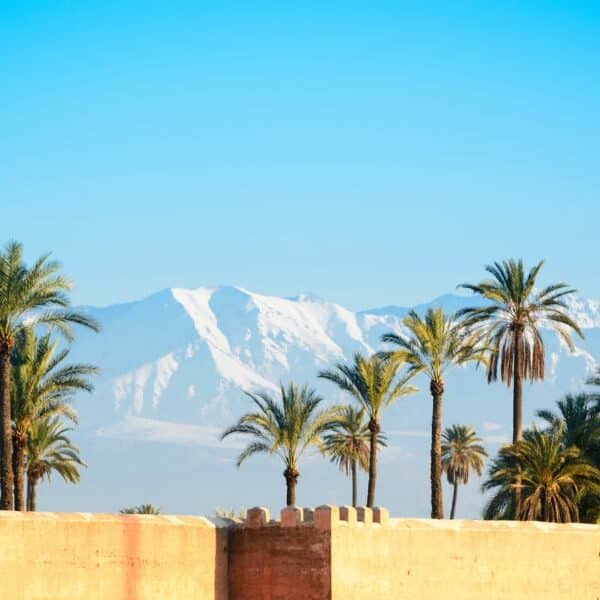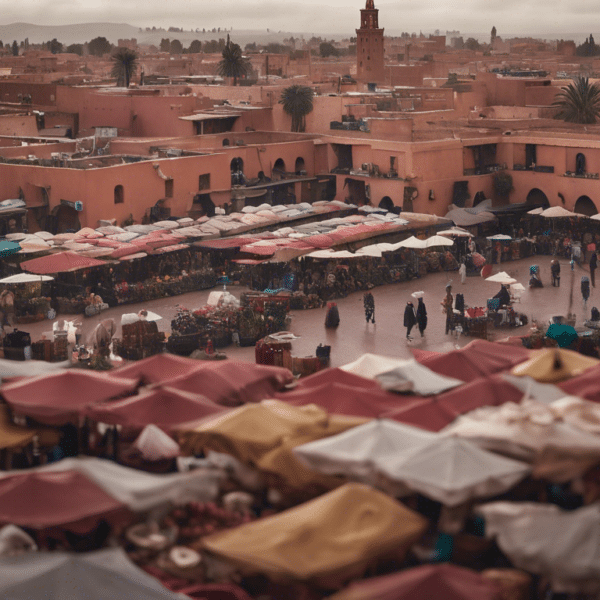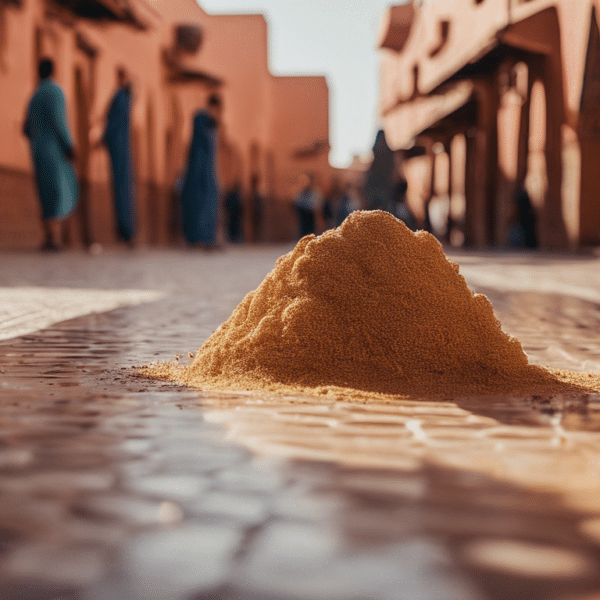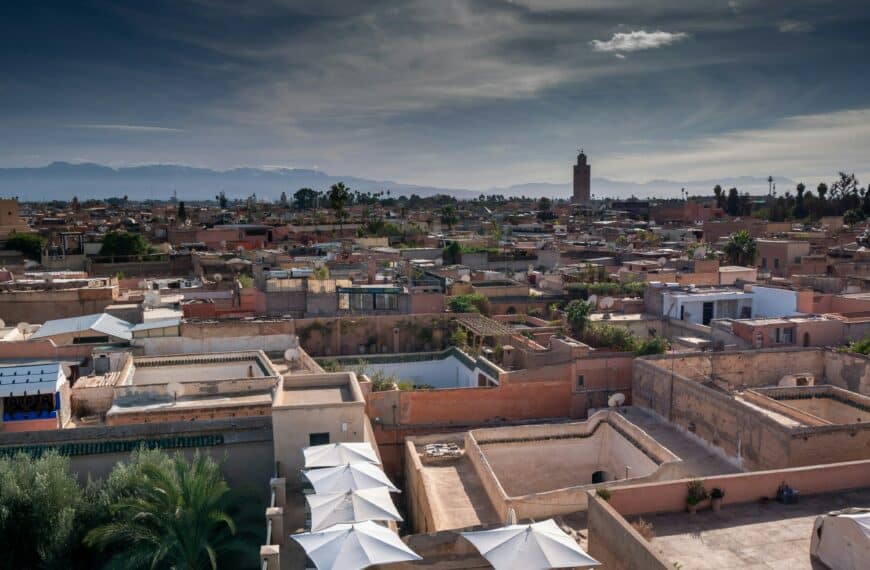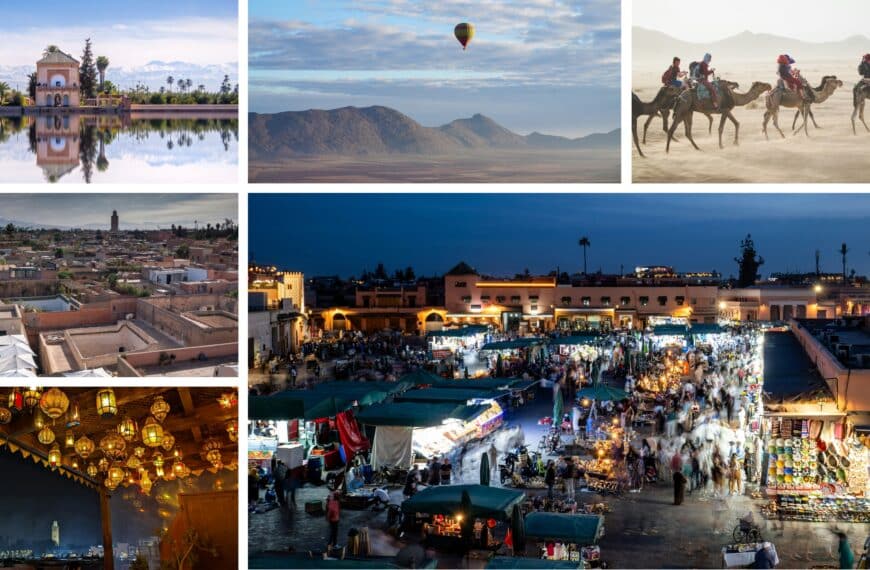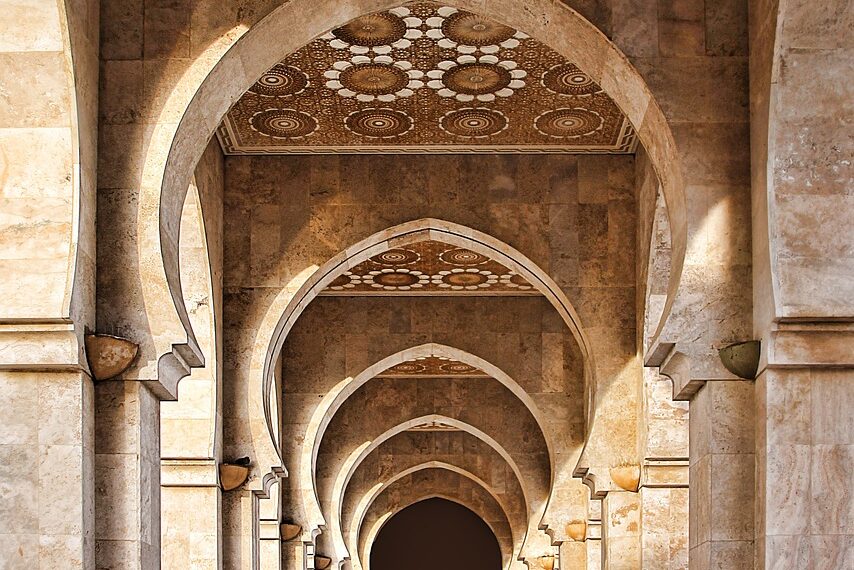The Geography of Marrakech and Its Impact on Weather
Marrakech, A City Shaped by Its Geography
Located in the heart of Morocco and nestled against the stunning backdrop of the Atlas Mountains, Marrakech is a city with a unique geographical context greatly influencing its weather. This thousand-year-old city enjoys a semi-arid climate due to its situation in the northern edge of Africa’s hot desert region, while benefitting from the cooling influence of the nearby mountains.
The Impact of the Atlas Mountains on Marrakech’s Weather
A major factor contributing to Marrakech’s distinctive climate is the proximity of the Atlas Mountains. In winter, they serve as a protective barrier, shielding the city from the cold northeasterly winds blowing from across the Mediterranean. Thus, Marrakech can enjoy the sort of mild winters that make for perfect sightseeing weather.
Additionally, the Atlas’ snow-capped peaks help regulate the city’s temperatures even in the hot summer months. They do this by creating a cooling effect—when the hot desert air meets the cold mountain air, it results in a refreshing afternoon breeze that can provide relief from the intense Moroccan sunshine.
The Impact of the Sahara Desert on Marrakech’s Weather
To the city’s south lies the vast expanse of the Sahara Desert, which also significantly influences Marrakech’s weather. The city experiences a moderate desert impact with extreme summer temperatures, while the winters remain milder due to its distance from the heart of the desert. The desert’s influence also accounts for the low humidity in Marrakech despite the city’s relatively high annual rainfall.
Seasonal Variations in Marrakech’s Weather
Thanks to its unique geographical position, Marrakech offers a stunning variation in weather conditions throughout the year. Winters can be pleasantly mild with some rainfall, whereas the summer months bring heat and sun, with temperatures often exceeding the 35-degree mark.
Despite the heat, the influence of the surrounding geography means that Marrakeck’s summer days are typically dry and sunny while the evenings can be pleasantly cool.
Understanding the Weather Before Travelling to Marrakech
Understanding Marrakech’s geography and how this shapes its weather can greatly enhance the travel experience. Early spring and late autumn often offer the perfect balance with warm, comfortable days and cool evenings. However, even at other times of the year, with an understanding of the local geography, travellers can better plan their day activities and make the most of the city’s unique weather patterns.
Featuring such a vast diversity in climate conditions, shaped as they are by the geography of the area, Marrakech is a city that can provide different weather experiences at different times of the year. These are just some of the geographical features that make Marrakech’s weather and climate truly unique.
Understanding Seasons in Marrakech: What to Expect
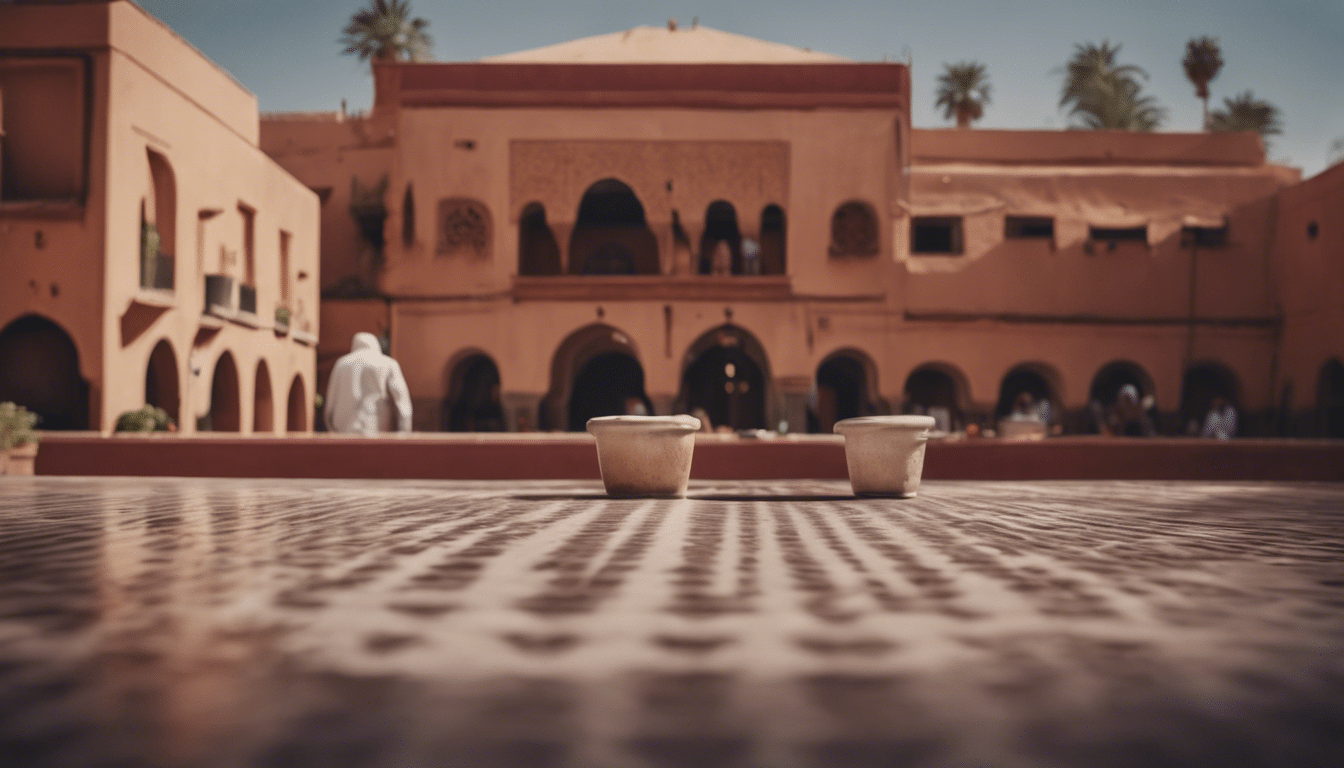
A First Glance at Marrakech Weather
The weather in Marrakech exhibits epic diversity, worthy of a city that blends culture, tradition, and modernity. With a Mediterranean climate that swings between mild and cool winters to hot summers, understanding the seasons in Marrakech is part of the adventure that awaits visitors.
Winter – A Time of Mild Surprise
The winter takes a bow in Marrakech from November to February. Visitors during this period should anticipate minimum temperatures of around 8°C (46°F) and highs extending to about 20°C (68°F). This Marrakech weather condition during winter provides a gentle nip that is perfect for exploration without excessive heat.
Spring – Blossom with Ideal Temperatures
Spring in Marrakech is a sight to behold, spanning from March to June. This season is characterized by temperatures starting around 20°C (68°F), moving up to a high of about 30°C (86°F) in late June. What to expect during this season is a jubilant landscape that exudes an excitement matching the weather.
Summer – Lively Warmth Festival
The summer (July to September) in Marrakech is characterized by high temperatures averaging around 35°C (95°F). As temperatures rise, the Marrakech weather becomes an invitation for people who favour the sun. During this period, it is essential to keep hydrated and adequately protected from the sun.
Autumn – The Cool Down
Autumn in Marrakech (October and November) is a gentle transition from the heat of summer to the cooler winter. The cooling temperatures, with a range of approximately 18°C (64°F) to 28°C (82°F), make this season an excellent time for outdoor activities.
Marrakech Weather: Month by Month Breakdown
Understanding the seasons in Marrakech involves taking a closer look at the weather throughout the year. In March, expect a range spanning from 11°C (52°F) to 23°C (73°F), offering a perfect balance between cool and warm weather. It is also crucial to note that Marrakech weather tends to change quickly, so planning should be done with some flexibility in mind.
Adapting to Marrakech Weather
It is essential when visiting Marrakech to consider the notable weather patterns during the different seasons. Whether enjoying a winter visit with mild temperatures or experiencing the vibrant sun of a Marrakech summer, appropriate clothing is a must. Visitors should also plan their activities bearing the weather predictions in mind.
In conclusion, the Marrakech weather presents not just a meteorological condition to visitors but offers a companion that shapes the contour of their adventure in the ochre city. From the winter to the summer, the weather provides a rich backdrop, breathing life into the city and its attractions, creating unique memories that will last a lifetime.
Weather Patterns: A Month by Month Breakdown of Marrakech’s Climate

Introduction to Marrakech’s Weather
Marrakech, often referred to as the “Ochre city”, is a city located in the heart of Morocco. Its vibrant culture, historical architecture, and welcoming locals have drawn visitors from all over the globe. However, a crucial feature that adds to Marrakech’s allure is its distinctive weather patterns. The Marrakech weather consists of an intriguing mix of subtropical semiarid climate with a noticeable Mediterranean influence. Understanding the climate of this enchanting city on a month-by-month basis is key to making the most out of your experience, whether you’re a first time visitor or a frequent traveller.
January
January holds the distinction of being Marrakech’s coldest month, however, with average temperatures around 12 to 14 degrees Celsius, the weather remains fairly mild. While the nights can be slightly chilly, the days are typically sunny and warm. Rainfall is rare, but fog is a common early morning phenomenon.
February
With February comes the first hint of spring. While temperatures steadily climb, reaching up to 20 degrees Celsius during the day, nights can still be cool. Unexpected bouts of rain may occur, but usually leave as quickly as they come. The city is blossoming, making it a beautiful period to visit.
March
March is when you can truly start to feel the warmth that characterizes Marrakech. The temperatures rise, ranging from 18 to 23 degrees, and rainfall becomes even less frequent. Its typically sunny weather with a slight breeze, making outdoor sightseeing an enjoyable activity.
April to May
April and May mark the transition into Marrakech’s summer. Temperatures frequently reach the high 20s during the day, and drop to a comfortable level at night. The city practically overflows with colours as Marrakech’s flora comes into full bloom, adding an extra dash of charm to this city’s magnificence.
June to September
The months between June and September are the peak of Marrakech’s summer. The weather during this time can be quite extreme, with temperatures often soaring beyond 40 degrees Celsius. Unrelenting sun, bright blue skies, and minimal rainfall are characteristic of this period. While it can be a bit intense, there’s something quite memorable about experiencing Marrakech’s summer first-hand.
October to December
In the last quarter of the year, the weather starts to cool down, making it ideal for those who prefer less intense heat. October holds onto a bit of the summer warmth, but come November, temperatures steadily drop, until December rounds out the year with an air of refreshment.
Bringing it all Together
In conclusion, Marrakech’s weather is as vibrant and varied as the city itself. It transitions smoothly from gentle winters to a radiant and intense summer, before easing into the mild beauty of autumn, painting a new picture of the city with every passing month. By understanding these patterns and planning accordingly, one can truly optimize the experience of travelling to this dynamic city. It’s important to remember that while the weather patterns provide a great guideline, Marrakech continually surprises visitors with its enriching experiences and unforgettable memories at all times of the year.


